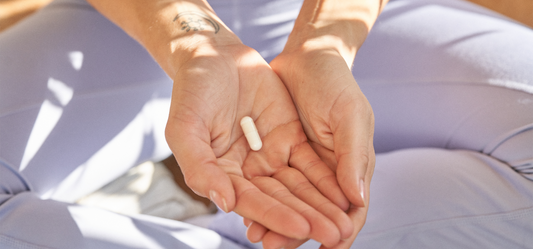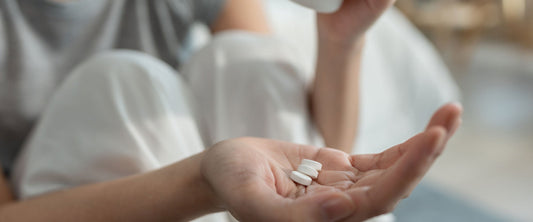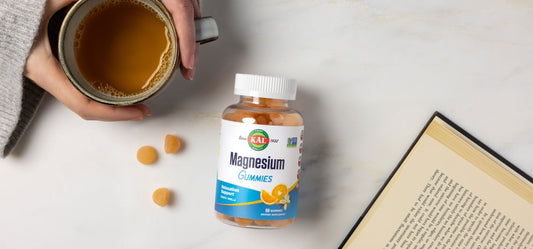When you think of electrolytes, what comes to mind?
Is it a neon-colored drink being chugged on a football field? You’re not alone. For many, sports drinks were the first introduction to electrolytes as a supplement for physical activity. There’s an entire industry built around it.
But electrolytes are far from being a sideline staple. Unlike those drinks, electrolytes themselves aren’t a human-made concoction—they’re minerals that have been in our diet for millennia. But they do offer crucial support for people going through physical activity, as well as daily function. Here, we’ll go through what they are, what they do for you, and how to experience their benefits in your daily life.
Is it in you to learn more? Let’s get started.
90 Years of Mineral Expertise
Fun fact: KAL was the first company to bring mineral supplements to market back in 1932. Nearly a century later, we’re still leading the way in products that harness the power of minerals. (They’re kind of our thing.)
But enough about us. Let’s talk about what electrolytes actually do—and why your body counts on them every single day.
What Are Electrolytes?
Electrolytes are minerals that carry a positive electric charge when they’re dissolved in water or body fluids. Our bodies need them, but we don’t naturally produce them. They can only come from food or fluid intake.
Many of the body’s most essential functions are powered by a small electric current. That’s where electrolytes come in.1 They provide a charge that supports these functions, including maintaining electrical neutrality in cells and generating action in the nerves and muscles. They also keep optimal fluid balance—which is crucial, considering the human body is about 60% water.2
We get electrolytes from food and drinking. We lose electrolytes through sweat and urine.3 That’s why drinks that replenish electrolytes are popular for the physically active crowd.
Some well-known minerals are also electrolytes, including:
- Sodium
- Potassium
- Magnesium
- Calcium
Here’s a rundown of what each of them does.
Sodium
Sodium is an osmotically active cation—a positively charged ion that creates an osmotic gradient that passively moves water by creating an imbalance of solute concentration.
Your body uses sodium to regulate fluid balance, transmit nerve signals, and support muscle function. Think of it as a traffic director telling water where to go, especially in your blood and cells.
Sodium is most commonly found in salt.1
How much is too much sodium?
This is a common question because, in American diets, sodium is largely associated with salty foods—which is why it may be the only electrolyte on this list you may actually need to limit. According to the American Heart Association, the ideal amount of sodium is around 1,500 mg for most adults, and no more than 2,300 mg.
But you shouldn’t ditch sodium altogether. It’s essential for various bodily functions. As with many things in life, it’s all about balance.
Magnesium
Magnesium is an intracellular cation, which means it’s positively charged and primarily found inside cells.
It plays a key role in muscles and nerve function, and—as our extensive work on Magnesium shows—it also helps support cardiovascular health, energy metabolism, and is commonly taken to support relaxation. It can even help regulate your body’s stress response by supporting adrenal health, and sleep in mature adults.*
That’s quite a list, which is why we call it our #1 mineral essential.
Like other electrolytes, we have to get Magnesium from food or supplements. Excellent sources include:5
- Pumpkin seeds
- Leafy greens (like spinach)
- Beans (especially black beans)
- Other seeds (like sunflower seeds)
- Nuts (especially almonds)
- Whole grains
That said, soil nutrient depletion food processing means today’s whole foods may not offer the same levels of nutrition they once did. Smart supplementation can help you get the Magnesium you need.
Potassium
Potassium is a positively charged intracellular ion that helps regulate fluid balance, nerve signaling, and muscle function inside cells.1
You probably know bananas are high in potassium. Other foods with this electrolyte include:5
- Salmon
- Avocados
- Coconut water
- Cantaloupe
- Cooked spinach and broccoli
- Potatoes
- Mushrooms
Here’s the thing: Scientists recommend we get 4,500 mg per day. Bananas have around 420 mg each, which means you would need to eat at least 10 bananas to reach that DV. This is where electrolyte boosts may help.
Calcium
Calcium is a predominantly extracellular cation, meaning it carries a positive charge and primarily functions outside your cells.
Calcium has been the poster nutrient for bone health since the Got Milk? campaign in the ‘90s. And it earns its strong bones reputation. Calcium is deeply involved in skeletal mineralization,1 which means it supports healthy bones and teeth.* But it’s also a key electrolyte.
Outside milk, great sources of calcium include:7
- Nonfat dairy products like (Greek yogurt and kefir)
- Lamb
- Leafy greens
- Tofu
- Sardines
- Grapefruit and orange juice
- Fortified almond milk
These are some of the most important electrolytes to fortify your diet and help your cells stay hydrated. Other electrolytes include bicarbonate, chloride, and phosphorus.
Benefits of Electrolytes
Those footballers who chug sports drinks on the sidelines are right: Since electrolytes are lost from the body through sweat, replenishing them is a key part of staying hydrated, especially after physical activity.
They’re also an essential part of balancing your pH levels, which measure the acidity and alkalinity within your system, and regulating your muscles.3
Doctors often use electrolytes in IV drips. That’s because you lose electrolytes through common illness symptoms like diarrhea and vomiting. Monitoring electrolytes and replenishing them when you aren’t feeling your best is essential—not just during exercise.
What Is a Good Source of Electrolytes?
Electrolytes are everywhere. But getting as much as scientists recommend? That’s another story.
The smartest way to maintain electrolyte levels is through a balanced diet (including the foods listed above) hydration, and smart supplementation.2
You won’t find electrolytes in most processed and ultra-processed foods—except sodium, of course. That means you can’t be reactive about getting enough electrolytes. You need to go out and get them.
Sports drinks are the go-to for many people, but they can feature excess sugar and other harmful additives.3 Our Hydro Magnesium Powder, on the other hand, is a hydration support drink mix with a purpose. Each scoop delivers a powerful dose of Magnesium Citrate, plus a bold hit of electrolytes from the Great Salt Lake. No added sugar, no Mountain Rush mystery flavor. Just nutritional benefits in a smooth tropical punch package, which can be added to your favorite beverage.*
Other essential electrolyte supplements include:
Mineral Magnitude
Essential minerals are part of us—and, at KAL, part of our history. When we focus on the key elements of health provided to us by Mother Nature, we foster lasting wellness and daily joy.
That’s why electrolytes are key to daily wellness. Whether you’re playing professional football or just playing with your kids, electrolyte balance helps you hydrate, function, and thrive.
For more tips on nutrition, mindful wellness practices, and how to fuel good feelings for the long run, follow us on Instagram at @kalvitamins!
*These statements have not been evaluated by the Food and Drug Administration. These products are not intended to diagnose, treat, cure or prevent any disease.
Resources:
- Shrimanker, I. and Bhattaria, S. “Electrolytes.” StatPearls. National Institute of Health, https://www.ncbi.nlm.nih.gov/books/NBK541123/
- Glazier, E., Ko, E. “Diet, hydration best way to get electrolytes.” Ask the Doctors, UCLA Health. https://www.uclahealth.org/news/article/diet-hydration-best-way-get-electrolytes.
- Beswick, Kyle. “What are electrolytes?” Cedars-Sinai Blog, Cedars-Sinai. https://www.cedars-sinai.org/blog/electrolytes.html.
- “How much sodium should I eat per day?” American Heart Association. Heart.Org, https://www.heart.org/en/healthy-living/healthy-eating/eat-smart/sodium/how-much-sodium-should-i-eat-per-day
- “Nutrients: Magnesium, Mg(mg). Agricultural Research Service. United States Department of Agriculture. nal.usda.gov/sites/default/files/page-files/magnesium.pdf.
- “Potassium-Rich Foods: A Comprehensive Guide.” WebMD, https://www.webmd.com/diet/foods-rich-in-potassium
- “Food sources of calcium.” Current Dietary Guidelines. Dietary Guidelines for Americans, https://www.dietaryguidelines.gov/food-sources-calcium




